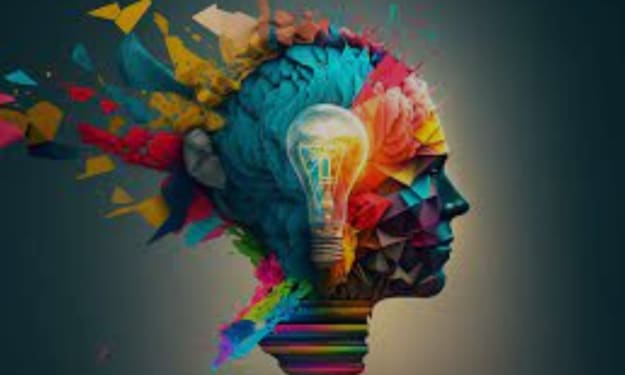What is IoT (Internet of Things) and How Does it Work?
Internet of Things | Latest Technology

The rapid advancement of technology has led to a connected world where everyday objects are becoming increasingly smart and interactive. At the forefront of this technological revolution stands the Internet of Things (IoT), a network of interconnected devices that have the ability to communicate and exchange data with each other. In this article, we delve into the world of IoT, its definition, its working principles, and its transformative impact on various industries.
Defining the Internet of Things
The Internet of Things refers to the network of physical objects embedded with sensors, software, and connectivity that enables them to collect and exchange data over the internet. These objects, also known as "smart devices," can range from household appliances and vehicles to industrial machinery and wearable gadgets. The primary goal of IoT is to create a seamless integration between the physical and digital worlds, enabling efficient data sharing, automation, and improved decision-making.
The Components of IoT
IoT comprises three main components: devices, connectivity, and data analytics.
a) Devices: IoT devices, also called "smart devices" or "connected devices," form the foundation of the IoT ecosystem. These devices are equipped with sensors, processors, and communication modules that allow them to collect data from the environment, process it, and communicate it to other devices or the cloud.
b) Connectivity: Seamless connectivity is the backbone of IoT. Devices in an IoT network rely on various communication protocols like Wi-Fi, Bluetooth, Zigbee, or cellular networks to establish connections and exchange data. This connectivity enables real-time data sharing and remote control of devices.
c) Data Analytics: The enormous amount of data generated by IoT devices holds significant value for businesses and organizations. Data analytics plays a vital role in extracting meaningful insights from the collected data, enabling informed decision-making, process optimization, and predictive analysis.
How IoT Works
IoT operates through a series of interconnected steps, starting from data collection to data processing and utilization:
a) Data Collection: IoT devices are equipped with sensors that collect data from their surroundings. These sensors can measure various parameters such as temperature, humidity, motion, light, and more. The collected data is then transmitted to the cloud or other devices for further processing.
b) Data Processing: Once the data is collected, it undergoes processing, either locally on the device itself or in the cloud. Data processing involves filtering, aggregating, and analyzing the collected information to extract valuable insights and actionable intelligence.
c) Data Transmission: Processed data is transmitted securely over the internet to other devices, cloud platforms, or data centers. This data exchange can occur in real-time or at scheduled intervals, depending on the application and the nature of the IoT deployment.
d) Data Storage: The transmitted data is stored in cloud-based servers or on-premises data centers. These storage facilities provide scalable and reliable data repositories, ensuring the availability of historical data for future analysis and reference.
e) Data Utilization: The collected and processed data is leveraged to derive insights, make informed decisions, optimize processes, and trigger automated actions. It enables businesses to enhance operational efficiency, create personalized user experiences, and improve overall productivity.
Applications of IoT
The applications of IoT are vast and span across various sectors:
a) Smart Homes: IoT has revolutionized the concept of home automation. Connected devices such as smart thermostats, lighting systems, security cameras, and voice-controlled assistants enable users to control and monitor their homes remotely, enhancing convenience, energy efficiency, and security.
b) Healthcare: IoT is transforming the healthcare industry, improving patient care, and optimizing healthcare operations. Wearable devices, remote monitoring systems, and smart healthcare equipment enable real-time health tracking, early detection of health issues, and personalized treatment plans. IoT devices can collect vital signs, monitor medication adherence, and transmit data to healthcare professionals for remote monitoring, enabling timely interventions and improved patient outcomes.
c) Industrial IoT (IIoT): In industrial settings, IoT is revolutionizing operations and optimizing resource utilization. Connected sensors and actuators enable real-time monitoring of equipment performance, predictive maintenance, and efficient supply chain management. IIoT facilitates the concept of a "smart factory" where machines communicate with each other, enhancing productivity, reducing downtime, and enabling proactive decision-making.
d) Smart Cities: IoT plays a crucial role in building smart and sustainable cities. Connected infrastructure, including smart streetlights, waste management systems, parking solutions, and environmental sensors, allows cities to optimize resource usage, reduce energy consumption, and improve citizen services. IoT-powered systems enable efficient traffic management, public safety, and environmental monitoring.
e) Agriculture: IoT has transformed agriculture practices, leading to the emergence of smart farming. Connected sensors and actuators monitor soil moisture, temperature, and nutrient levels, enabling precise irrigation and fertilization. Drones equipped with imaging technologies and IoT capabilities help farmers monitor crop health, detect diseases, and optimize yields. IoT-driven farming practices promote sustainable agriculture and minimize resource wastage.
f) Transportation and Logistics: IoT applications in transportation and logistics streamline operations, improve safety, and enhance customer experiences. Connected vehicles enable real-time tracking, monitoring of vehicle health, and efficient fleet management. IoT-based logistics solutions provide end-to-end visibility of the supply chain, optimizing routes, reducing delivery times, and minimizing costs.
g) Retail and Customer Experience: IoT technologies have transformed the retail industry by creating personalized and immersive shopping experiences. Connected devices, such as smart shelves, beacons, and digital signage, enable retailers to understand customer behavior, optimize store layouts, and deliver personalized promotions. IoT-powered inventory management systems ensure efficient stock replenishment and reduce out-of-stock situations.
Challenges and Considerations
While IoT brings tremendous opportunities, it also poses certain challenges that need to be addressed:
a) Security: IoT devices are vulnerable to cyberattacks and data breaches. With interconnected devices, a single security breach can have cascading effects. Strong security measures, including encryption, authentication, and regular firmware updates, are crucial to safeguard IoT ecosystems.
b) Privacy: IoT devices collect vast amounts of personal data, raising concerns about privacy. Striking the right balance between data collection and privacy protection is essential. Transparent data policies, user consent mechanisms, and data anonymization techniques can help address privacy concerns.
c) Interoperability: The IoT landscape comprises a multitude of devices from different manufacturers, often running on different protocols. Ensuring interoperability and seamless communication between devices from different vendors is a challenge that needs to be overcome to unleash the full potential of IoT.
d) Scalability: As the number of connected devices increases, IoT systems must be able to handle the growing data volume and processing requirements. Scalability is a critical consideration to ensure uninterrupted connectivity and efficient data management.
e) Ethical Considerations: IoT raises ethical questions regarding the responsible use of data and the potential impact on society. Clear ethical guidelines and frameworks must be established to address issues such as data ownership, bias in algorithms, and potential job displacements.
Conclusion
The Internet of Things (IoT) is reshaping the way we live, work, and interact with the world around us. By connecting devices, collecting data, and enabling intelligent decision-making, IoT has the potential to create a more connected, efficient, and sustainable future. However, along with its transformative potential, IoT also poses challenges that need to be addressed to ensure security, privacy, and ethical considerations. With ongoing advancements, IoT is set to revolutionize industries and empower individuals, driving us towards a smarter and more interconnected world.
About the Creator
nizam uddin
My name is Nizam Uddin and I am thrilled to be a part of Vocal.com's community of writers. As a passionate technology enthusiast, I am excited to share my insights and opinions on the latest trends and innovations in the world of tech.






Comments
There are no comments for this story
Be the first to respond and start the conversation.